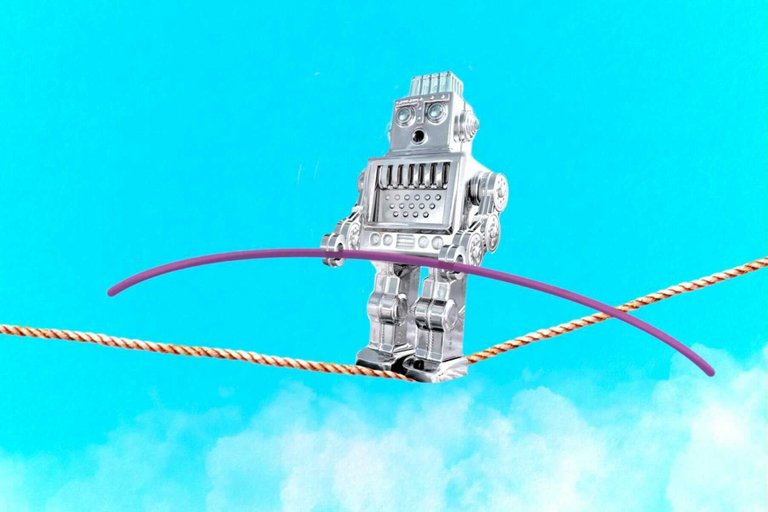Beyond TerraUSD - Beware of Two Additional UnStablecoins
Introduction
With the recent collapse of TerraUSD (UST), scrutiny has shifted to other 'stables', be they fiat-backed or algorithmic. With this raised suspicion and fear, the underlying stability of stablecoins has been put under the microscope.
Stablecoin firms claim that each of their issued tokens is backed by real-world and/or crypto assets, so they behave as a vital component in the crypto market, providing traders with an alternative in which to park their cash between placing bets on volatile coins. They include stablecoins that are supposedly 100% backed by cash or cash equivalents (bank deposits, Treasury bills, commercial paper, etc.), such as Tether (USDT) and Circle USD (USDC). At the other end of the spectrum are algorithmic stablecoins. They are not necessarily backed by real assets but depend on financial engineering to maintain their peg with fiat money, usually the dollar.
[Gola, Y. These are the least 'stable' stablecoins not named TerraUSD. (Accessed June 2, 2022). See also: Cointelegraph. Stablecoins 101: What are crypto stablecoins, and how do they work?. (Accessed June 2, 2022)].
As UST was classified as an algorithmic stablecoin, it now comes as no surprise that the focus of the scrutiny into stability is directed at the algorithmics. Furthermore there is a growing distrust evident within the entire sector. For example, take Tether (USDT). Tether's market cap has fallen from $83.22 billion on the day that USTs peg was broken to $72.49 billion today (June 2, 2022). Nor can one forget that on May 12, 2022, Tether briefly lost its dollar parity falling to $0.95; [See, e.g. Gola, Y. $1.9T wipeout in crypto risks spilling over to stocks, bonds — stablecoin Tether in focus. (Accessed June 2, 2022)].
But even though it appears Tether is weathering the storm and has recovered from its brief depegging, there are several algorithmic stablecoins trading below their designated fiat pegs to be cautionary about.
USDX
Kava Network's native "decentralized" stablecoin, USDX, reliably traded $0.02–$0.04 cents below the dollar, but it was not spared from the UST collapse moving far away from its near perfect peg; See, e.g. Finneseth, J. Terra contagion leads to 80%+ decline in DeFi protocols associated with UST. (Accessed June 2, 2022)]. On May 12, 2022, USDX fell to it's lowest level of $0.66 as a result of the UST debacle and has been struggling to regain peg ever since. Today, June 2, 2022, USDX is trading at $0.897.
Since May 9, 2022 USDX has suffered outflows of $60 million as a result of redemptions. USDX's reliable stability was shook due to its collateral exposure to UST as well as its utilization of the Interblockchain Communication Protocol. The situation was exacerbated by a decline in USDX's other reserve assets, including KAVA, Cosmos (ATOM), and Wrapped Bitcoin (WBTC).
The co-founder and CEO of Kava Labs, Scott Stuart, has assured investors "Once UST is out of the system, USDX is anticipated to go back to its peg" [Stuart, S. Twitter. (Accessed June 2, 2022)]. So far, USDX has been unable to regain its peg.
VAI
Built on the Binance Smart Chain-based Venus Protocol, a lending platform, today (June 2, 2022) VAI is trading at $0.947.
However, like USDX, the token is notorious for trading below its intended dollar peg since launch. For instance, in September 2021—long before the TerraUSD's collapse, VAI had dropped as low as $0.74. In addition, the depeg scenario occurred after Venus Protocol suffered a $77 million loss on bad debts in May 2021 due to large liquidations in its lending platform.
[Gola. These are the least 'stable' stablecoins not named TerraUSD. Supra].
VAI carried a market cap of $272.84 million in May 2021 but following the Venus debt problems together with the UST mess its net value is now $85 million. This suggests a substantial decline in demand for this stablecoin and it appears that no relief therefrom is on the immediate horizon.
Not all 'Doom and Gloom' - Stable Exceptions
Dai (DAI), an algorithmic stablecoin native to Maker—a peer-to-contract lending platform, performed exceptionally well versus its rivals, never fluctuating too far from its promised dollar peg even though witnessing a 20% decline in its market capitalization since May 9.
[Id].
The Dai price chart backs this up:
Two other algorithmic stablecoin projects did a good job maintaining peg throughout the Terra/UST saga. First, FRAX, "a unique stablecoin with parts of its supply backed by collateral and parts of the supply algorithmic" CoinMarketCap. FRAX. (Accessed June 2, 2022)]. Currently trading at $0.9959, its year-to-date price chart appears as follows:
And lastly, MAI, currently trading at $0.9836 and its year-to-date price chart demonstrates the relative peg stability as follows:
See also: Nagoda, K. The Fallout From Terra's UST Trashing - Extends Well Beyond Terra. (Accessed June 2, 2022)
Final Thoughts
In these turbulent market times we must be aware of instabilities that threaten our investments. We must remain vigilant to keep abreast of all relevant market news and information involving that for which we have invested our hard earned money.
Although monikered 'stablecoins', the above shows that they can be anything but 'stable'. Only two examples of instability have been shown herein, but as the Terra/UST situation continues to muddle through the markets be sure that more will appear.
So please, if you are invested in stablecoins, particularly algorithmic stablecoins, be careful out there in the market and be diligent.
Posted Using LeoFinance Beta

.png)
.png)
.png)
.png)
.png)
This cannot be over emphasized.
Thanks for the run through stable coins.
Posted Using LeoFinance Beta